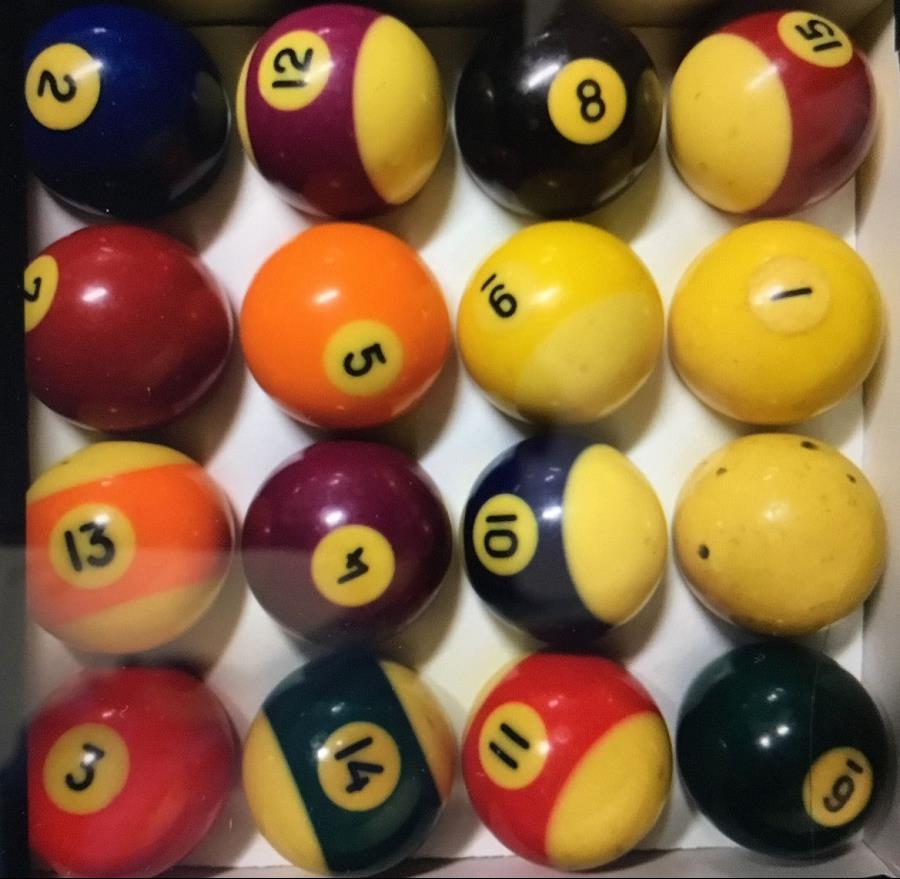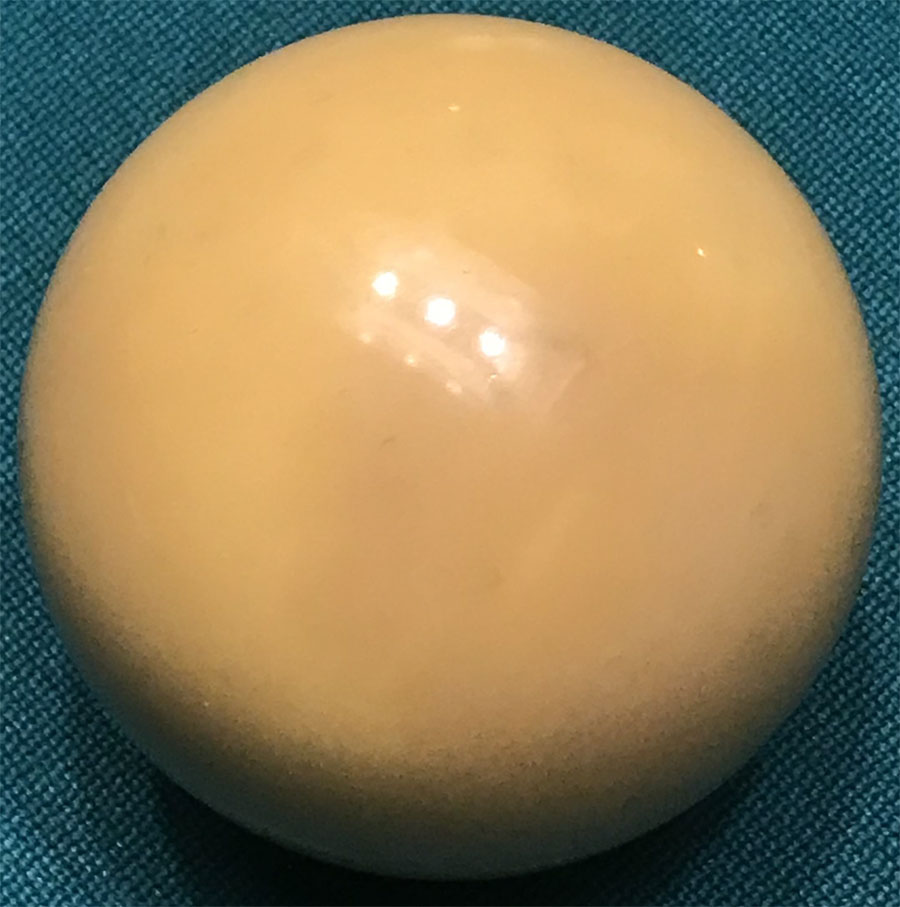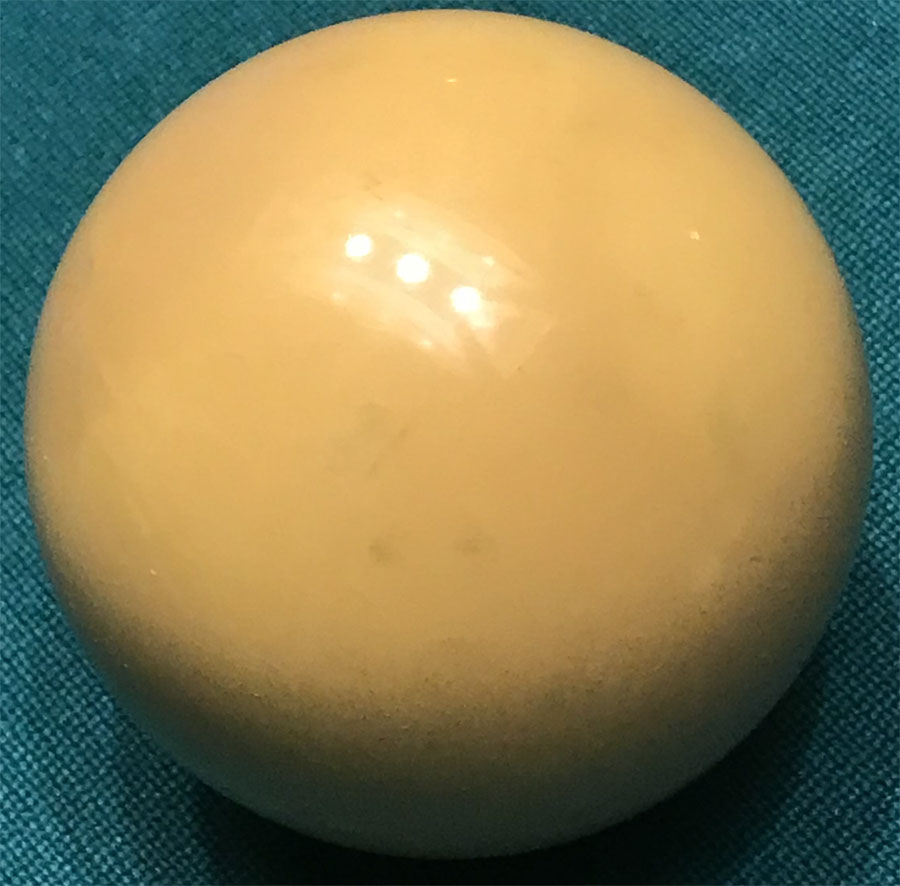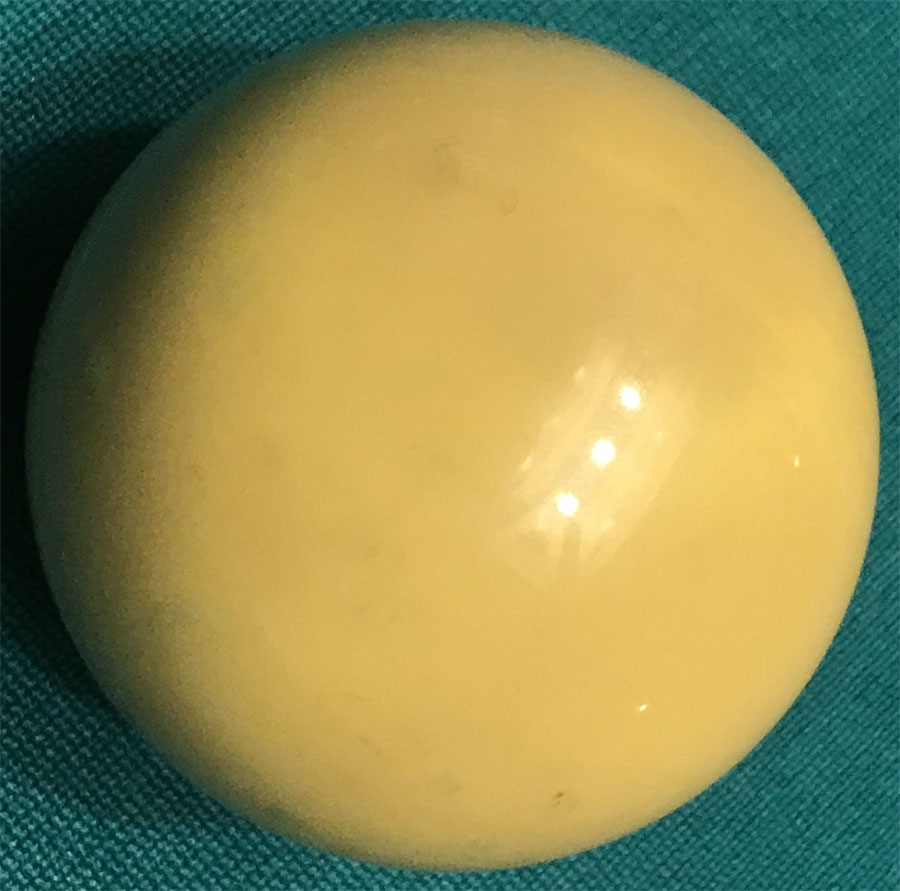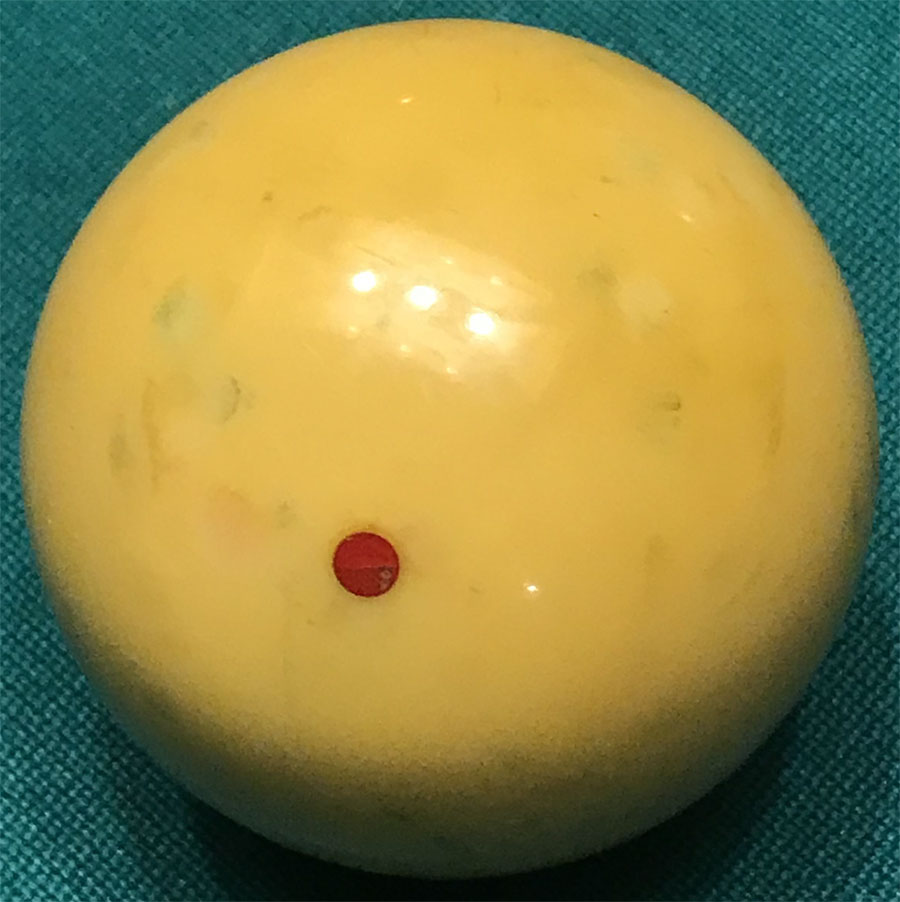Value of a Set of 1968 Belgian Ivory Billiard Balls
5/14/2019 8:38:00 PM
Value of a Set of 1968 Belgian Ivory Billiard Balls
The set of balls that came with my 1968 Gandy pool table were labeled as "Belgian Ivory" billiard balls.
I stopped using them 30 years ago and replaced them with a standard composite ball set.
I do still have them, though the dye has bled into the white part of each ball through the decades.
How much is a set of Belgian Ivory pool balls worth?
Value of a Set of 1968 Belgian Ivory Billiard Balls
Replies & Comments
 billiardsforum on 5/15/2019 3:15:05 AM
billiardsforum on 5/15/2019 3:15:05 AMIf you are 100% sure they are real ivory, then a full set can be worth hundreds on up to thousands depending on the condition.
Problem is that they are hard to move due to big restrictions on Ivory.
Would love to see photos of those. You can email them again if that is easier.
user1556072369 on 5/15/2019 8:53:35 AM
I'm trying to sell my pool table for $900 and would include these ivory pool balls to entice for a total of $1500.
Box in the photo is a newer box, but I am in fact 100% certain the original box had a white label saying "Belgian Ivory". As a kid I always thought it was weird because what does Belgium have to do with Ivory? In the late 1960s, ivory billiard balls weren’t a big deal.
There are ways to prove they are ivory.
Thought adding the Ivory balls might entice somebody.
 RackAndRollBilliardHallAndMuseum on 5/23/2019 6:18:39 PM
RackAndRollBilliardHallAndMuseum on 5/23/2019 6:18:39 PMI believe the balls you are showing are made of "Ivorene" as it was called, made by Aramith, a Belgian manufacturer. It is a phenolic resin based ball, not real ivory. I have many sets of billiard balls from the century old Brunswick Billiard Tables I have collected and are available for the public to experience at Rack & Roll Billiard Hall and Museum. I have gathered information from reliable sources and copied the information here:
The first billiard balls were ivory. With an elephant tusk just three or four balls could be produced in a long process, so they ended up being very costly. The high price coupled with the fragility and little homogeneity of the balls made that way thus forced to seek a more affordable material.
An American inventor, John Hyatt, found in 1860 a great substitute for ivory: nitrocellulose. Mixing it with alcohol, a plastic material to manufacture much cheaper balls was achieved. The problem was that the material was like wildfire and a strong hit could make it explode.
Half a century later, the chemist Leo Baekeland invented bakelite, the type of phenolic resin with which most of billiard balls are manufactured today (though it is also used for its great advantages: it is very resistant to heat, it is cheaper and it allows getting perfectly spherical, highly impact resistant and less dirty balls).
Aramith... A Legend in the Billiard World
For several decades Belgian Aramith Billiard balls have enjoyed a legendary reputation for outstanding endurance and uncompromising quality. Made by Saluc in Belguim, Aramith excellence is the result of a high-tech process that combines the unmatched characteristics of phenolic resin with fine Belgian craftsmanship. Aramith's consistantly reliable performance guarantees players the pleasure of razor-sharp precision. Their exceptionally long product life offers the table owner the best value for the buck year after year!
Aramith phenolic resin : why it makes the difference!
Heavy duty designRather than a polyester number-plug-design, the Aramith concept has the numbers precision-engraved in a solid core that runs all the way through the ball. As such, it is impossible for number-cores to fall out over time. Using phenolic resin assures homogeneous characteristics in each ball part. So homogeneous that when finally getting to its breaking point (and one needs minimum a 5 ton-load in case of an Aramith ball), the ball will break up totally at random, and not along the parting line between the stripe and the rest of the ball, as one would expect.
Burn-spot resistantHitting a cue ball actually accelerates it from 0 to over 30 km/h (20 MPH) in just a fraction of a second.The resulting friction temperature between ball and cloth can easily reach 250°c (482°F). That’s why Aramith balls are the only ones made from genuine phenolic resin : their molecular structure is engineered to be wear resistant at these high temperatures, making Aramith balls far less vulnerable to abrasive burn-spots. They hold their high luster and smoothness over a much longer period of time, resulting in minimal ball and table cloth wear.
High Impact resistanceBecause hitting the balls is the essence of the billiard game, impact resistance is a critical factor. Aramith’s phenolic heat-curing process fully stabilizes material tensions. It produces a vitrified high-density surface that offers maximum impact resistance. Tests show Aramith phenolic balls to withstand to over 50 times more impacts than other polymer or polyester balls. They are also twice more scratch-resistant. Consequently, when intensively used even on less maintained tables, Aramith balls are clearly far less easily damaged than others by pocket fixings, table mechanisms or cue sticks…
user1556072369 on 5/23/2019 6:58:44 PM
Awesome information and I certainly have no information other than the date and the white label on the box which merely stated "Belgian Ivory"
....it appears that I might be storing the pool table instead of selling it, but you certainly have me curious about the balls.
Is there an absolute process to determine what billiard balls are made from?
 RackAndRollBilliardHallAndMuseum on 5/24/2019 12:13:32 AM
RackAndRollBilliardHallAndMuseum on 5/24/2019 12:13:32 AMTrue Ivory balls are cherished as a novelty and historic part of the game of Billiards, which we all love. That said, many of the family heirloom Brunswick Tables I have purchased are century old and older. When I planned to furnish my Rack & Roll Billiard Hall and Museum in Washington, NJ, with heirloom tables, many people advised me that a billiard hall should have commercial tables with the same light above each and the same felt, and the same balls. I chose to break all the rules!
By purchasing family heirloom Brunswick-Balke-Collender (and 1 clearly plaqued with "J. M. Brunswick and Balke, Co") tables, I negotiated directly with the owners of wealthy estates and ended up with everything billiards related in almost every case, including the Cues, incredible Venetian Glass Lamps, and different sets of balls that have accompanied the tables. Some sets are Hyatt Balls and many sets are Aramith Balls. The tables I focus upon purchasing are pristine and hold historic value, which I enjoy sharing with the public.
In particular, the Brunswick Orleans 9' solid Mahogany table I purchased directly from Dennis Brooks, Sr at the Brooks Bros. Mansion in North Salem, NY, 4 years ago included an extra set of Aramith Balls, an Ivory Cue Ball, an antique Brass Lamp converted to electric, and a solid Brass Rack. When I brought out the balls last year to use on a Brunswick Arcade 10' century old table in incredible shape, I was cautioned by two patrons to remove the Cue Ball and lock it away! Attached are photos of this Ivory Cue Ball. We play with it occasionally. It is heavier than other balls, it shows inside imperfections in color, with grey hues running through it, and tiny spots where nerves pass out, I am told, but is perfectly round. The outside surface of this Cue Ball is smooth and it plays extremely well! Many old Ivory Cue Balls you find are yellowed with age and chipped due to rowdy behavior. This Ivory Cue Ball is still perfect because it was a cherished possession and never abused.
The first 3 photos are of this Ball. The last photo is of a 2" ball which I believe may also be Ivory - it has 2 red dots permanently installed on either side. Expert opinions providing insights regarding these balls are greatly appreciated.
Value of a Set of 1968 Belgian Ivory Billiard Balls
- Title: Value of a Set of 1968 Belgian Ivory Billiard Balls
- Author: user1556072369 (David Schultz)
- Published: 5/14/2019 8:38:00 PM
- Last Updated: 5/15/2019 3:05:48 AM
- Last Updated By: billiardsforum (Billiards Forum)

